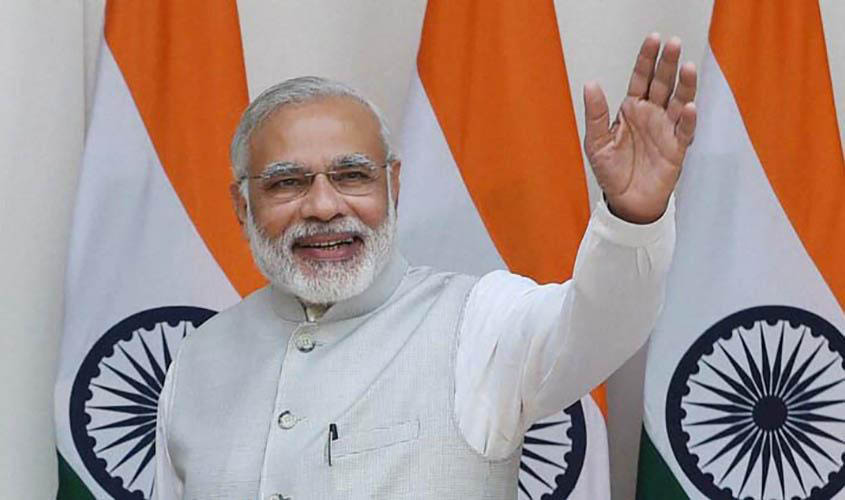Faced with the upward trajectory of the BJP’s fortunes, sections of the opposition cried “Mayday” on Madhu Limaye’s 95th birth anniversary at a function in the Constitution Club on International Labour Day (“Mayday” is an international emergency radio distress signal, used by aviators, mariners and firefighters.). The forthcoming presidential election was sought to be turned into a pivot for opposition unity and a common candidate to contest against the ruling party’s nominee was proposed.
The meeting on 1 May has been followed by parlays among non-NDA parties to ensure that a common candidate emerges. Congress President Sonia Gandhi has met leaders of other parties. Sitaram Yechury has travelled to Bhubaneswar to rope in BJD’s Naveen Patnaik. Ghulam Nabi Azad has used his negotiating skills to woo the Telangana Rashtra Samithi in Hyderabad. Though decimated in numbers, Congress has emerged as the fulcrum of the anti-BJP unity effort. Sonia Gandhi, who faced personal attacks from various sections of political spectrum till few years back, has suddenly emerged as the rallying point for those who seek to oppose Narendra Modi.
Acerbic anti-Congressism of the disparate factions of the Socialist movement in India was sought to be given a decent burial at the Limaye memorial meet. Leaders of various parties, which have umbilical links with the Ram Manohar Lohia-Jayaprakash Narain-Acharya Narendra Dev legacy, got together wi th the two Communist parties to emphasise the need for “Unity of Progressive Forces”(read anti-BJP front). Congress was represented by Digvijay Singh. Fisssure-ridden Samajwadi Party did not join the show; it split three days later. JD(U), BSP, NCP, LSP, JD-S and trade union leaders of Left orientation were represented at the meeting in which CPM’s Sitaram Yechury, CPI’s D. Raja, BSP’s Sudheendra Bhadoria and JD(U)’s Sharad Yadav were the principal speakers.
The memorial meeting began with a discourse by historian Irfan Habib who traced the history of the socialist movement in India. He said post Independence while Jawaharlal Nehru was keen to have the participation of his erstwhile Congress Socialist Party colleagues in the shaping of India, the Lohia-Jayaprakash-Narendra Dev led factions chose anti-Congressism as leitmotif; socialism came second in their order of preference. Dr Lohia entered into an agreement with Nanaji Deshmukh and found virtue in RSS (Signifiantly, Limaye had differed with Lohia on this and it was his insistence against RSS “dual membership” in 1979 which led to the collapse of the Janata Party and triggered the emergence of BJP in April 1980).
Sharad Yadav, whose candidature and subsequent victory in a Lok Sabha byelection from Jabalpur in 1974 heralded the “Janata” concept, praised Indira Gandhi’s leadership and hailed her for the Bangladesh victory and merger of Sikkim. Sharad Yadav had been put up by the united opposition against Rajiv Gandhi from Amethi in 1981 and he has been a bitter critic of Congress—his name is being proposed in some quarters for being the joint opposition candidate.
As a word of caution Digvijay Singh drew a parallel with the anti-Indira Gandhi front of the opposition parties which emerged post 1969 and which Mrs Gandhi trounced in 1971 Lok Sabha and 1972 Assembly elections. An anti-Modi front bereft of a definite agenda could meet a similar fate as the “Grand Alliance” of yore.
The coming weeks will see high-profile activity in non-BJP camp. If a common opposition candidate emerges it is doubtful whether it will change either the outcome of the Presidential election or alter the discourse of politics in India. Opposition is hedging its bets on the fact that in 2014 BJP swept to power on 31% vote share. Will a common presidential candidate in 2017 be able to ensure that the parties which polled the rest of 69% will be able to jointly oppose BJP in 2019?
Most political parties are today bereft of Ism. This includes Congress. Sans BJP and the Communist parties all other political parties are essentially family fiefdoms. Left ideology having taken the curtain call in most part of the globe, the BJP, with its intrinsic ability to rejuvenate and throw up new leadership faces, has emerged as a stand-alone party. Unless the opposition is able to come up with a new theme, the idiom of politics as set by BJP shall prevail. Add to this the requirement of organisational base extending to the booth level which the Amit Shah-led juggernaut has copiously produced. Task ahead for opposition becomes uphill.
The happy byproduct of the exercise for finding a common presidential candidate is that when Rahul Gandhi is anointed as Congress President, possibly in October, he shall head a party which no longer will carry the baggage of past acrimony as the process of writing obituary to anti-Congressism has begun. Simultaneously, the process of recognising BJP as the “ruling party” also been set in motion. Rahul Gandhi has been spending quality time with senior statesmen in recent months. He has interacted with President Pranab Mukherjee on a number of occasions, the last being a few days back. In his meeting with Sharad Pawar, the veteran is understood to have advised Rahul that he has to devote more time to national affairs and not disappear unannounced to foreign destinations. Pawar, in his heyday, used to vacation abroad—even in exotic locations like Waikiki beach in Hawaii. That did not affect his grassroot support as he was always linked to his cadre. Rahul may like to give credence to Pawar’s advice.
The joint opposition candidate will be an opportunity for Congress to return to the nation’s political discourse as a serious player; it’s for the party to utilise the pivot and resituate itself.

